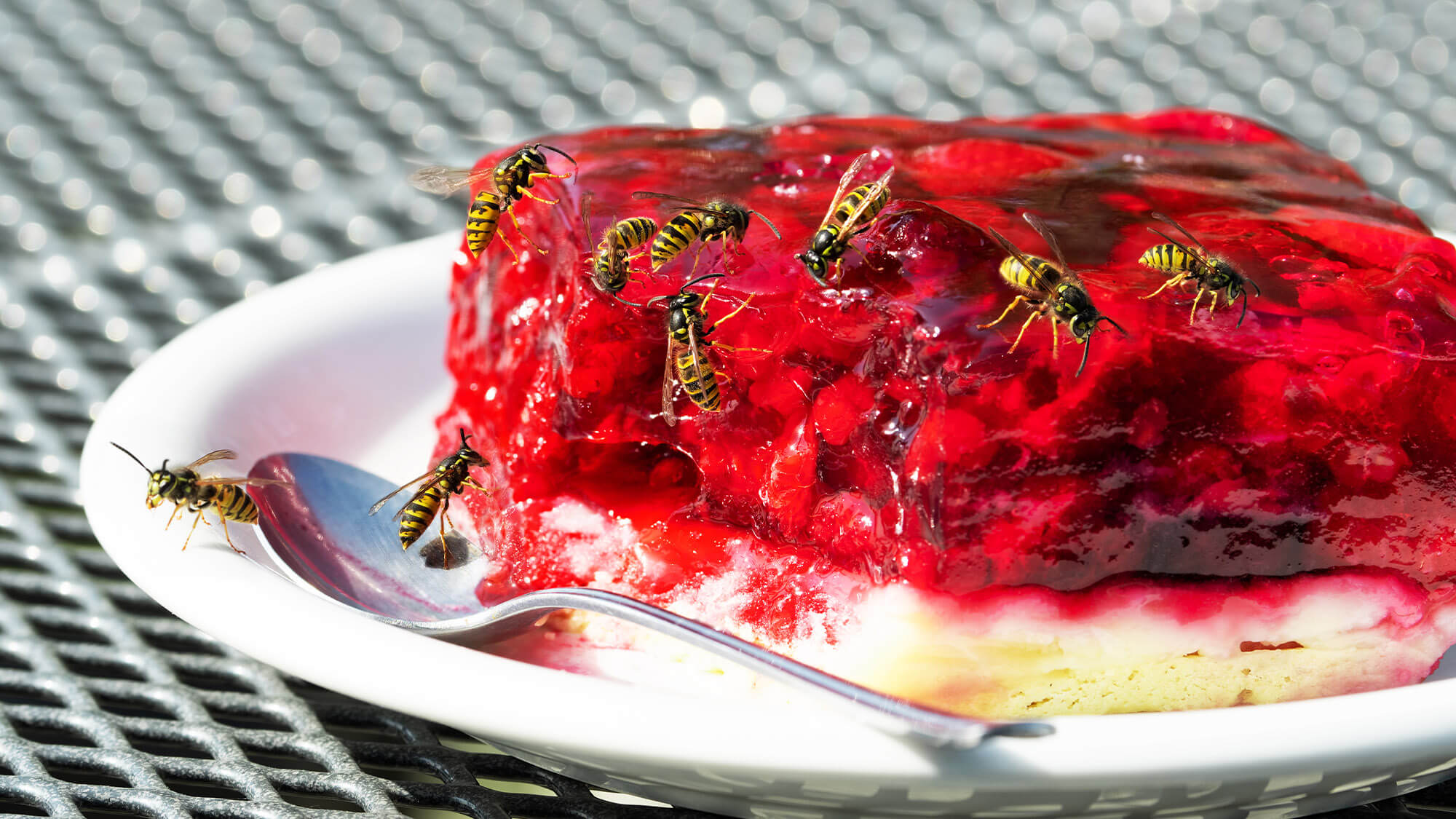It’s the season for barbecues, drinks parties and… wasps! Nobody likes to see them circling the table, threatening the kids and waging war on our food. However, did you know there are a few old traditional tricks so you don’t have to fight them all summer?

Identify the environment so you know the enemy
Like many insects, wasps start off in small communities that grow as the summer goes on. In April and May, through to early June, the nests are still quite small. It’s the perfect time when it’s easy to deal with them without too many risks. You can spot the nests by tracking where the wasps fly.
Wasps like fairly dark places that are easy to access and relatively undisturbed: an abandoned burrow in the garden, under the roof tiles, in a loft or garden shed, the garage, inside a pipe or a chimney. If you want to stop them settling in, the easiest way is to regularly close the doors or windows of garages and workshops rather than leaving them open all the time.
Destroying wasp’s nests isn’t always the automatic choice. On the contrary, this is actually only done when it’s justified. If wasps have taken up residence in your home, volunteer experts from the network of wasp advisers will assess the situation with you and advise you how best to proceed. The Luxembourg Fire & Rescue Corps (CGDIS) will only step in when there is a real and imminent danger to the population.
Keep wasps away
Even though we’re quick to feel threatened, wasps generally don’t pay much attention to our little ones. The only thing that drives them is eating: it’s our turkey kebabs and fruit salads that they’re interested in.
For a more peaceful meal, agree to share. Keep the melon peel or a few pieces of grilled meat for the wasps and set them up a good distance from your table.
Then, if you want to avoid being noticed, hide the smell of your food with fragrances that wasps don’t like:
- repellent plants (tomatoes, mint, basil, chives, sweet woodruff, citronella, scented geranium, etc.)
- ground coffee or incense sticks
- citronella candles
- a small bowl with crushed cloves
- grilling garlic or onion at the same time as meat and fish
Once the meal is over, the best thing to do is quickly cover the food outdoors and clear the table.
Trap the more persistent n ones
If prevention, sharing and concealment are no longer getting the job done, you may be tempted to take things up a notch. You should know that homemade traps might not be the best solution though. They inflict a horribly painful death on the wasps, and there’s no guarantee you’ll finish off the colony.
They’ll actually attract even more of them. You might also get the wrong victim and trap other insects like bees.
Wasp traps should only be considered as a last resort and after careful thought. So, go for a minimalist version and place them a good distance away. For the bait, use protein-rich foods (meat, fish, dog food) rather than sweet foods like syrup or fruit juice. You’ll need to change them regularly, but at least you won’t attract any bees.
Stay calm and cautious to avoid getting stung
The wasp’s only goal is to feed, not to sting you. It will only sting if it feels endangered itself. So, don’t welcome it with a fly swatter or a flip-flop at arm’s length – you’ll only make it hostile. Stay calm, avoid sudden movements, and it will fly away without hurting you.
Also not a good idea: blowing on a wasp to chase it away. Despite your intentions, you’ll only make the wasp angry, as it will take the CO2 in your breath as a warning sign.
There are a few obvious yet often forgotten precautions to avoid stings:
- Drink from a cup rather than a can or bottle
- Wear shoes when walking in grass
- Examine your clothes before putting them back on
- Wipe your kids’ hands and mouths with water after eating
- Don’t block the entrance to the nest or cut off the flight path to the entrance



